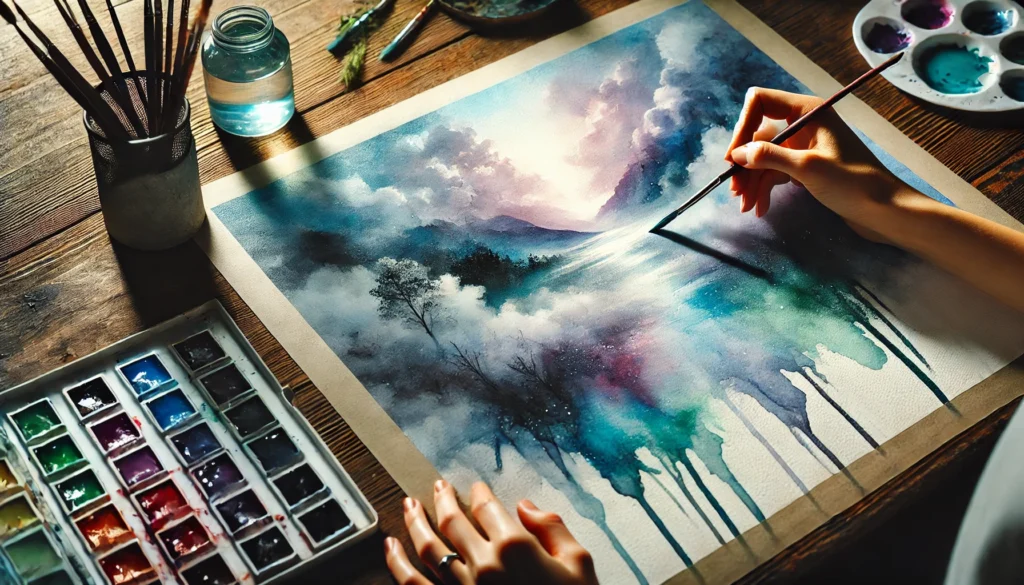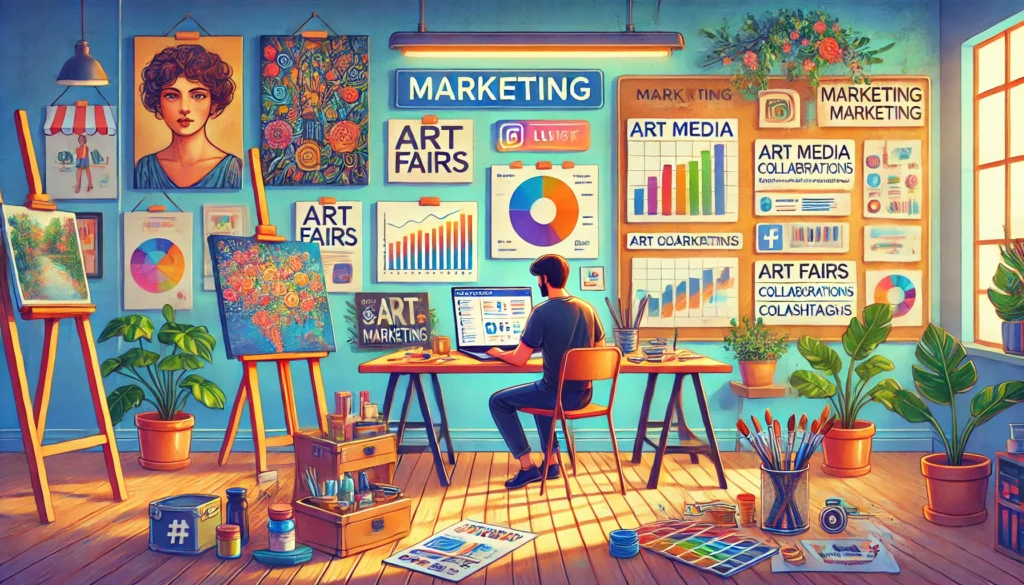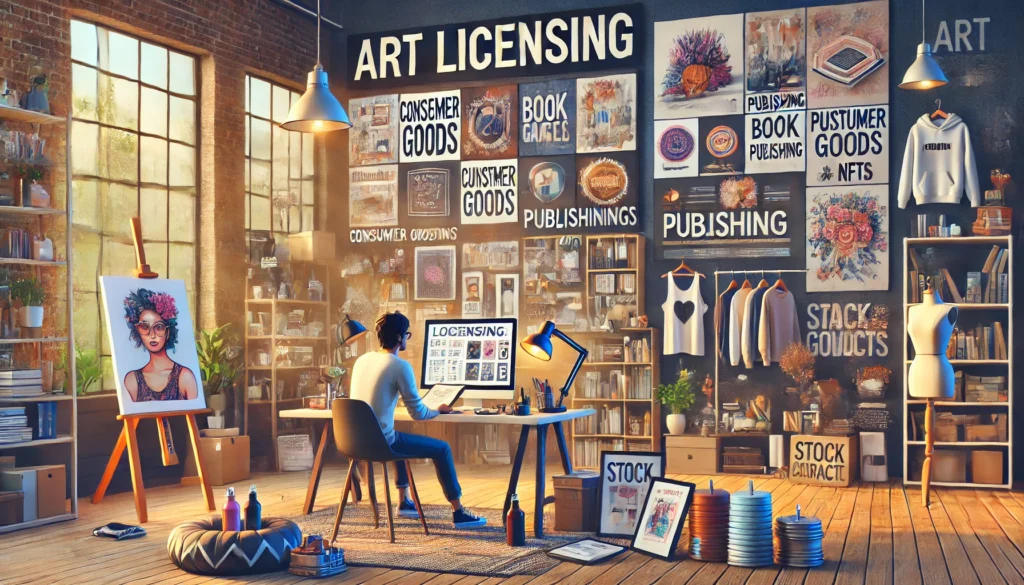How to Sell Art Online: A Step-by-Step Guide

Selling art online opens up a world of opportunities for artists to reach a global audience, build their brand, and earn a steady income. Here’s a comprehensive guide to help you successfully navigate the world of online art sales.
1. Choose the Right Platform
Selecting the right platform is crucial for reaching your target audience. Consider:
- Etsy: Ideal for handmade or unique pieces.
- Saatchi Art: Great for fine art and professional artists.
- Shopify: Perfect for building your own branded e-commerce site.
- Instagram and Pinterest: Excellent for showcasing visual content and driving traffic to your store.
Research each platform’s audience, fees, and features to decide what works best for you.
2. Build a Professional Online Store
If you choose to create your own store, make sure it reflects your brand. Key elements include:
- A Strong Portfolio: High-quality images of your art with clear descriptions.
- E-Commerce Features: Easy-to-use shopping cart and secure payment options.
- SEO Optimization: Use keywords that help your art rank in search engine results.
- Mobile-Friendly Design: Ensure your site is accessible on all devices.
3. Create High-Quality Images of Your Artwork
Images are the first thing potential buyers see. Tips for capturing great visuals:
- Use good lighting to avoid shadows or glare.
- Showcase different angles and close-ups.
- Include size references to give buyers a sense of scale.
- Optimize image files for fast loading without sacrificing quality.
4. Write Compelling Descriptions
Help buyers connect with your art by:
- Sharing the story or inspiration behind the piece.
- Including details about the medium, materials, and techniques used.
- Mentioning dimensions, frame details (if any), and shipping information.
5. Set Competitive Prices
Pricing your art appropriately is key. Consider:
- Your Costs: Materials, time, and overhead expenses.
- Market Rates: Research what similar artists charge for comparable work.
- Value Perception: High prices can increase perceived value but may limit affordability.
Be transparent about any additional costs, such as shipping or framing.
6. Promote Your Art on Social Media
Social media is a powerful tool for driving traffic to your online store. Strategies include:
- Posting Regularly: Share your creative process, finished works, and updates.
- Engaging with Followers: Respond to comments and build a community.
- Using Hashtags: Research relevant tags to increase visibility.
- Running Ads: Use targeted ads on platforms like Instagram and Facebook.
7. Leverage Email Marketing
Build a mailing list to stay connected with potential buyers. Use it to:
- Announce new collections or sales.
- Share exclusive content, such as behind-the-scenes stories.
- Offer discounts or early access to loyal subscribers.
8. Offer Limited Editions and Prints
Expand your market by offering:
- Limited Edition Prints: Create exclusivity for certain designs.
- Open Edition Prints: Provide affordable options for budget-conscious buyers.
- Merchandise: Use your art on products like mugs, t-shirts, or phone cases.
9. Provide Excellent Customer Service
Happy customers lead to repeat sales and referrals. Focus on:
- Clear Communication: Answer questions promptly and professionally.
- Reliable Shipping: Use trusted carriers and provide tracking information.
- Returns Policy: Offer fair and transparent terms for returns or exchanges.
10. Network with Online Art Communities
Join online groups and forums to:
- Share your work and receive feedback.
- Learn from other artists’ experiences.
- Stay updated on trends and opportunities.
11. Utilize SEO and Blogging
Drive organic traffic to your store by:
- Writing blog posts about your creative process or art trends.
- Using keywords in product titles, descriptions, and tags.
- Adding alt text to images for better search engine visibility.
12. Collaborate with Influencers and Bloggers
Team up with influencers or bloggers in the art niche to:
- Showcase your work to their audience.
- Gain credibility through endorsements.
- Drive traffic and sales to your online store.
13. Track Your Analytics
Measure your success using tools like Google Analytics or built-in platform insights. Track:
- Traffic sources and visitor behavior.
- Popular products and best-selling categories.
- Conversion rates to identify areas for improvement.
14. Offer Discounts and Promotions
Attract new buyers and retain loyal customers by:
- Running seasonal sales.
- Offering discounts for first-time buyers.
- Providing bundle deals on prints or merchandise.
15. Stay Consistent and Persistent
Selling art online takes time and effort. Stay consistent in your marketing efforts, continually refine your approach, and be patient as you build your audience and reputation.
Conclusion
Selling art online can be a rewarding experience when done strategically. By choosing the right platforms, showcasing your work professionally, and actively engaging with your audience, you can turn your passion for art into a thriving online business. Keep learning, experimenting, and sharing your unique creations with the world!

























































































